Glute bridges are a basic bodyweight move.
People will even say, “These are easy!” And think they are beyond that basic bodyweight exercise.
But guess what!?
All too often people aren’t doing them correctly! AND even the most advanced exerciser needs to return to that FUNDAMENTAL move.
Let me ask you a few quick questions too…
- Have ever felt your low back during glute bridges?
- Or maybe your hamstrings are doing all the work?
- Or maybe your quads are working?
- Heck…maybe you even feel your traps and shoulders!
Answer yes to one of these?…Or maybe all of these, huh?
Well it’s called the GLUTE BRIDGE for a reason…Not because these other muscles should be working, but because your GLUTES should be powering the move.
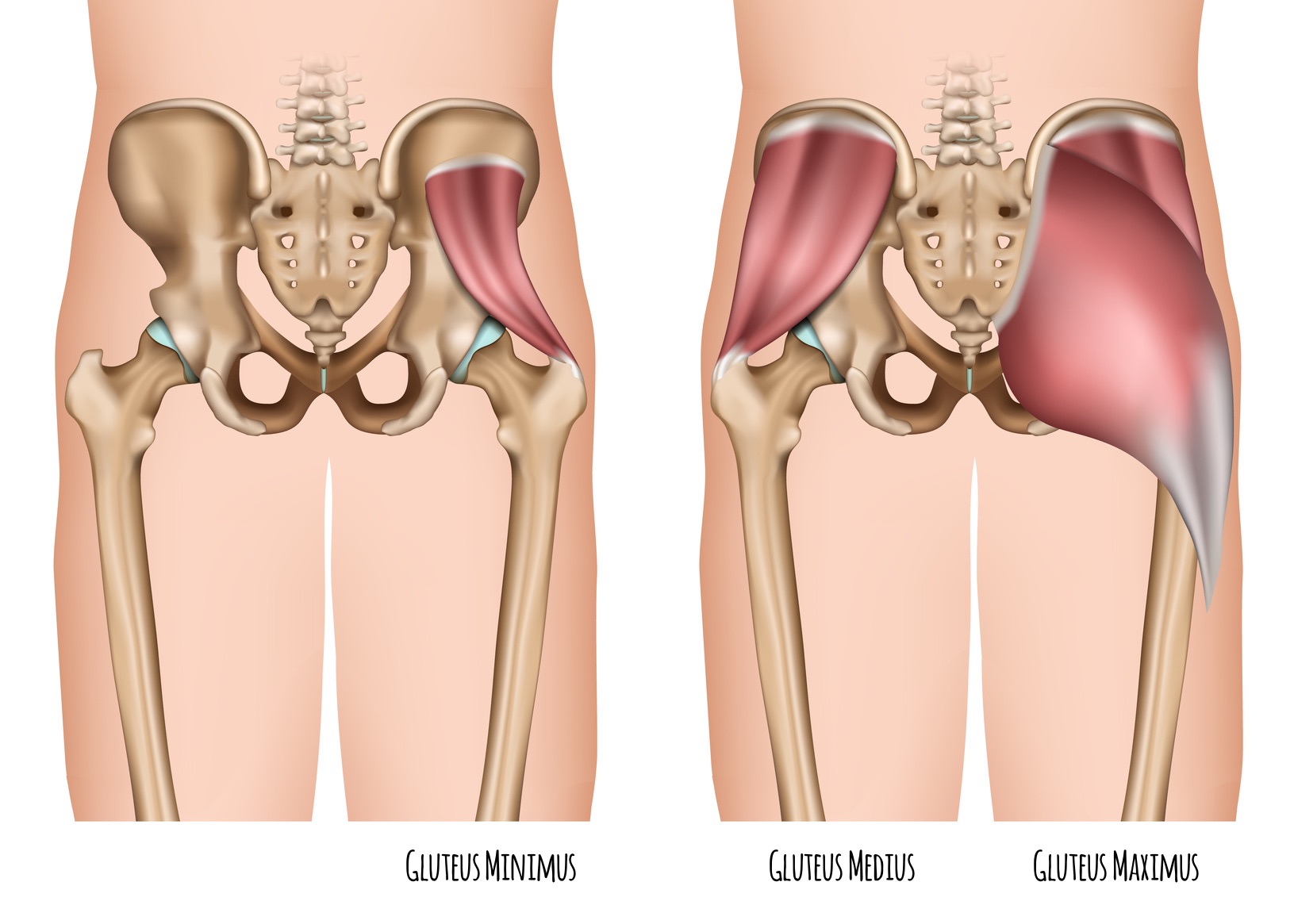 So if you’re feeling these other muscles engaging and taking over for your glutes, you not only aren’t reaping the benefits of the glute bridge, so may need to change your form, but you’ve also got some compensations you may need to address that could lead to injury!
So if you’re feeling these other muscles engaging and taking over for your glutes, you not only aren’t reaping the benefits of the glute bridge, so may need to change your form, but you’ve also got some compensations you may need to address that could lead to injury!
And if you’re now thinking…”Well I just really don’t feel anything. And I don’t feel my glutes at all so I probably just need to do something HARDER…”
You’re also wrong.
Yes, as we advance, we want to add weights and harder variations to keep challenging our muscles so we get results.
BUT…No matter how advanced you are, heck actually even the MORE advanced an exerciser you are, the MORE you should be able to contract your glutes during a basic bodyweight bridge.
Now note I didn’t say it should necessarily be “hard” to do as an advanced exerciser, but you should be able to contract your glutes to create a burn even with just your own bodyweight no matter how much you lift.
Because it all comes down to the mind-body connection.
If you can’t recruit the muscles correctly with your own bodyweight, there is a good chance you won’t recruit the right muscles as you add more and more load or try harder and harder variations.
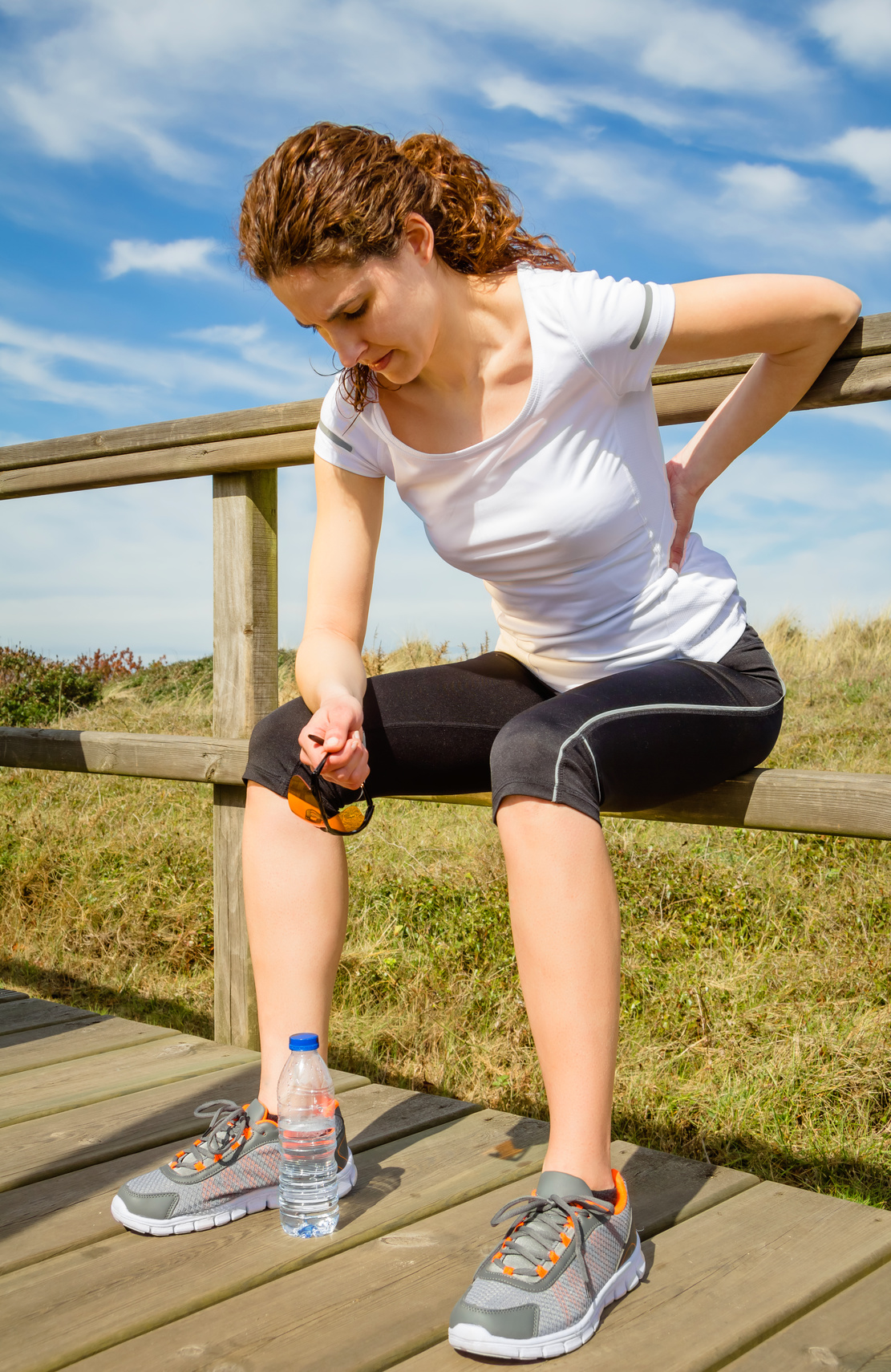
And if you aren’t using the right muscles?
Well that is when you risk overloading muscles that can’t handle the load, which can lead to INJURY.
That is why I wanted to share a few quick tips and coaching cues hat I use with my clients so they can get those glutes activated and firing.
Because the basic glute bridge is a must-do activation move. It can help activate the glutes and improve your hip extension so you can run faster and lift more.
BUT it must be done correctly so your glutes actually engage!
So if you’re not feeling those glutes working, try these 4 tips to improve your bridging.
Bridging Tip #1: Mind Your Set Up!
Many people when they go to bridge up just lie on their back and lift their butt off the ground. They pay no attention to foot positioning or what muscles they are using to drive up.
But by paying attention to how you are driving up and the positioning of your feet, you can make sure your glutes are working and other muscles, like your hamstrings, aren’t compensating.
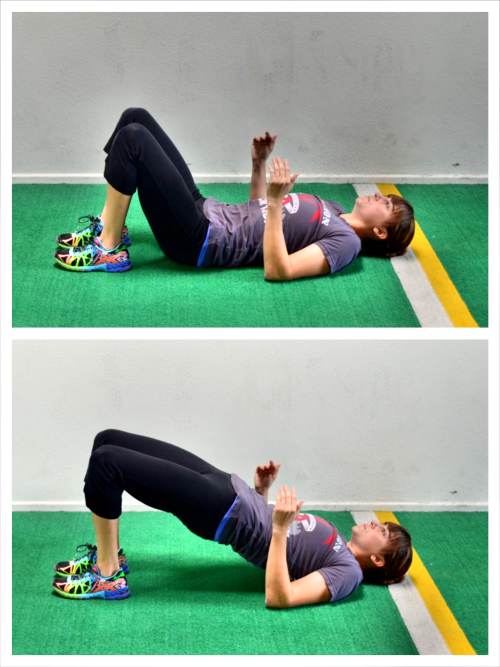 A great way to start to set up is to lie on your back and place your feet flat on the ground just beyond your fingertips when your arms are straight down by your sides. If your feet get too far away from your butt, you are more likely to use your hamstrings.
A great way to start to set up is to lie on your back and place your feet flat on the ground just beyond your fingertips when your arms are straight down by your sides. If your feet get too far away from your butt, you are more likely to use your hamstrings.
You also want to make sure your feet are flat on the ground. You’ll sometimes see images of people up on their toes during bridges, but talk about a way to make it more challenging to engage your glutes. Actually, if you struggle to engage your glutes, think about driving more through your HEELS as you bridge up.
Then, once you have this positioning, bend your elbows and drive them into the ground. You want to think about driving your elbows down into the ground and then even drive through your upper back as you bridge up. This will help prevent you from feeling bridges in your upper traps and neck. It can also help you make sure your glutes are working and you aren’t again making your hamstrings the prime movers.
And then when you bridge up, driving your heels and upper back into the ground, think about driving your knees forward over your toes.
Don’t lift your heels to try and do this. Or adjust your feet in closer (adjusting your feet in closer may actually make you start to feel the bridge in your quads if your hips are tight). Your knees will not actually go over your toes!
The point is by thinking about driving your knees toward your toes, you won’t drive yourself backward onto your shoulders. You will also make sure to evenly drive through your upper back. This will help focus on the glutes and make sure your hamstrings and traps don’t get overloaded.
Then make sure your feet are even and about hip-width apart. You don’t want your knees falling open or caving in. You CAN do a close-stance glute bridge or a wide-stance glute bridge but you need to still make sure your ankles, knees and hips are in the proper alignment. If they aren’t in alignment, you are going to perpetuate poor movement patterns.
This proper set up can also help you unlock tight hips by forcing your glutes to create hip extension as you bridge up. It will also prevent your quads from taking over, which if they do start trying to work, won’t help you open up tight hip flexors.
Part of this set up also needs to be learning to engage your abs, which can be done using a posterior pelvic tilt!
Bridging Tip #2: Tilt It Up Aka Stop Trying To Use Your Back To Get Up Higher!
One of the things that happens most often is that, in an attempt to bridge up HIGHER, people arch and use their lower back. And then they just push and ignore the fact that all they feel is their lower back.
Why does this happen? Why aren’t your glutes firing like they should be and you are instead loading your low back?
Because when we are focused on simply bridging up higher to replicate a movement, instead of focusing more on the muscles that should be working, our bodies recruit whatever muscles are easily available to meet our demands.
We will demand mobility out of an area that really shouldn’t be providing that mobility. And we will overuse muscles that aren’t meant to handle the load. Because our body takes the path of least resistance to do the movements that we ask of it.
And this process of compensation often happens because our hips are tight and our glutes, and even our abs, are underactive.
That is why it is key to do bridges correctly so you can improve your hip extension AND activate your glutes and abs. And the key to doing this is the posterior pelvic tilt!
By using the posterior pelvic tilt, you can engage your abs, prevent hyperextension of your lumbar spine AND get your glutes to power the bridge and hip extension.
 To do the posterior pelvic tilt, set up at the bottom of the bridge with your feet flat on the ground and elbows driving down into the ground too.
To do the posterior pelvic tilt, set up at the bottom of the bridge with your feet flat on the ground and elbows driving down into the ground too.
Feel the space between your low back and the ground? Push that space away so you are tilting your hips and pressing your low back into the ground.
You may feel too like you are drawing your abs in toward your spine.
Keeping the core engaged like this, bridge up. Squeeze your butt and pause. Do not worry about how high you go. Just squeeze the butt as you keep your abs engaged in this way. Then lower down.
You may notice at the top you start to lose the tilt as you just try to drive up higher. This means you are trying to again arch your lower back instead of just extending your hips.
It is key with all of these tips, and with all exercises for that matter, that not only do you pay attention to form, BUT you THINK about the muscles that are working so you can realize if you lose the posterior pelvic tilt and stop using your glutes.
Lower back down and repeat. If you need, reset that posterior pelvic tilt each time. But focus on maintaining that so you CAN’T arch your low back and can only bridge as high as you glutes, and hips for that matter, allow!
Bridging Tip #3: THINK About The Muscles That Should Be Working
As I mentioned above, you have to THINK about the muscles working. Part of contracting your muscles and feeling them work is about establishing the mind-body connection so your mind can more efficiently and effectively recruit the right muscles for the job.
And basic bodyweight activation moves like the bridge are the easiest way to improve your mind-body connection so things work correctly during more compound lifts.
Think about how many times you’ve just gone through the motions of a workout? Or pushed through even when you sort of know the wrong muscle, aka your low back, is working.
You just figure, “Hey gotta get through the workout!”
The problem is…That attitude can lead to injury. AND it can also mean that all these workouts you’re spending “working your glutes” are actually going to waste.
Cause guess what!?!
Your glutes aren’t working!
So during these moves THINK about your glutes driving the movement. That way you can adjust if they aren’t. And by focusing on your glutes working, you can contract them even harder as you pause at the top of the bridge.
Heck…it can even be fun to see how much shakeage you can create by mentally trying to contract harder!
Bridging Tip #4: What If I STILL Don’t Feel My Glutes?!
There is a chance that you will still struggle, even after trying to tweak your form, with activating your glutes. Heck maybe even just one side doesn’t seem to want to engage!
This is where some mobility work, some Foam Rolling and Dynamic Stretching may need to come into play first to loosen those tight muscles so your glutes can engage properly.
Using rolling first can help you relax tight and overexcited muscles, muscles your mind may want to usually recruit first.
Roll your hamstrings (often for people rolling right under the glute helps).
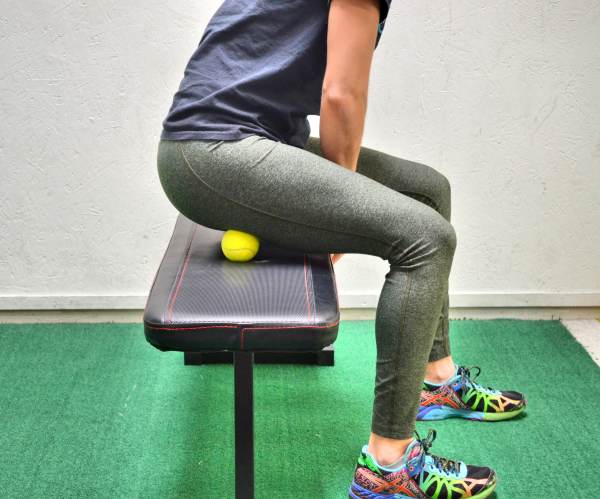
Roll your hips to help loosen tight hips before you bridge. Heck, roll your quads!
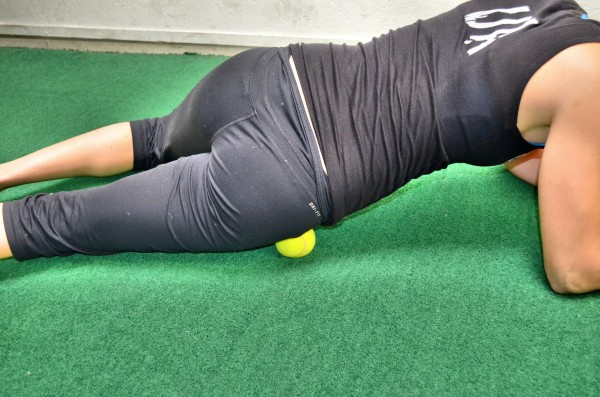
Start there. Then do even a dynamic stretch or two, like the Half-Kneeling Hip And Quad Stretch, to start to open up your hips.
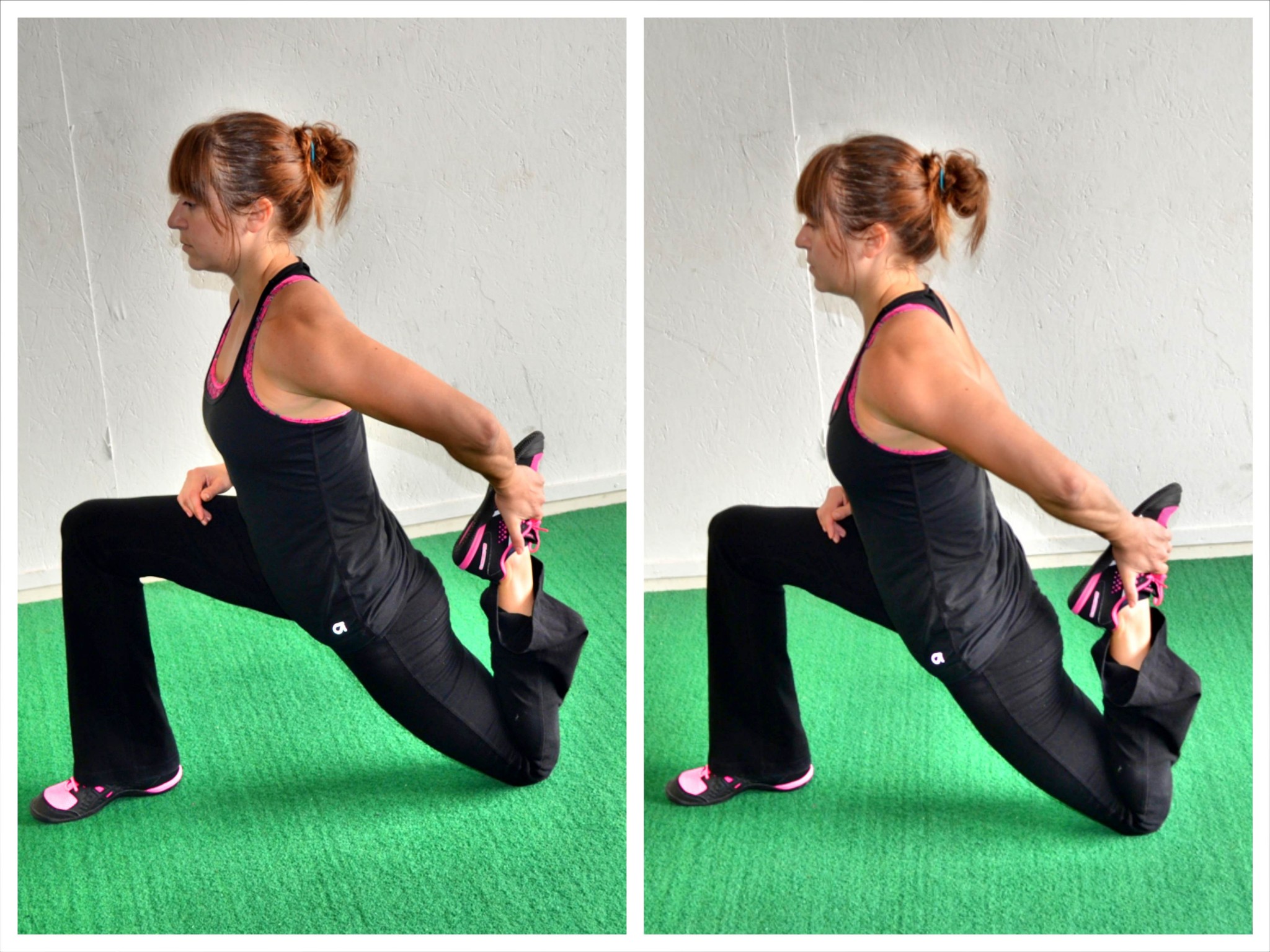
THEN try the glute bridge.
Often rolling, stretching THEN activating can help us FEEL the glutes working when they should be!
That process will allow us to restore muscles to their proper length tension relationships so we can get the right muscles working…AKA our GLUTES!
But what if it is only one side?
Well the focus on that tight side and even try some unilateral activation before.
Try a Fire Hydrant or Donkey Kick. Another basic bodyweight moves to focus on that side that isn’t firing.
 THEN return to the bilateral move once you’ve established the mind-body connection! (I mention the Fire Hydrant too because sometimes activating the glute medius helps the glute maximus fire better even during moves like the Glute Bridge!)
THEN return to the bilateral move once you’ve established the mind-body connection! (I mention the Fire Hydrant too because sometimes activating the glute medius helps the glute maximus fire better even during moves like the Glute Bridge!)
But NEVER underestimate the importance of the Basic Bodyweight Glute Bridge. And don’t ignore the importance of those other silly looking basic activation moves for your glutes either!
Those moves are what help you prevent injury and get the right muscles working.
These silly, BASIC moves are so important it’s why I created a 28-Day Booty Burner to help my clients get their glutes working the way they should be!
Learn More About Glute Activation And Unlocking Tight Hips –>
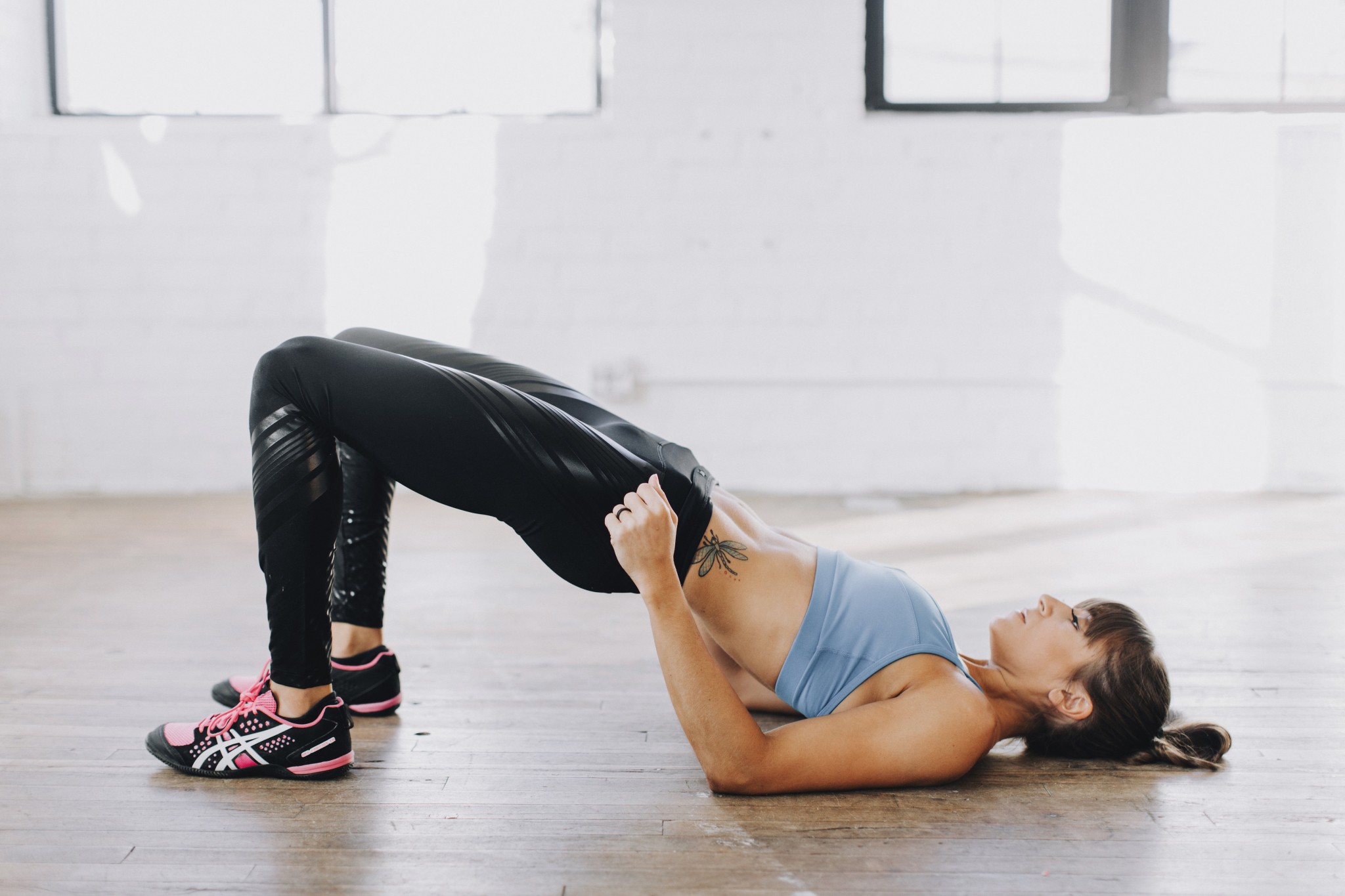

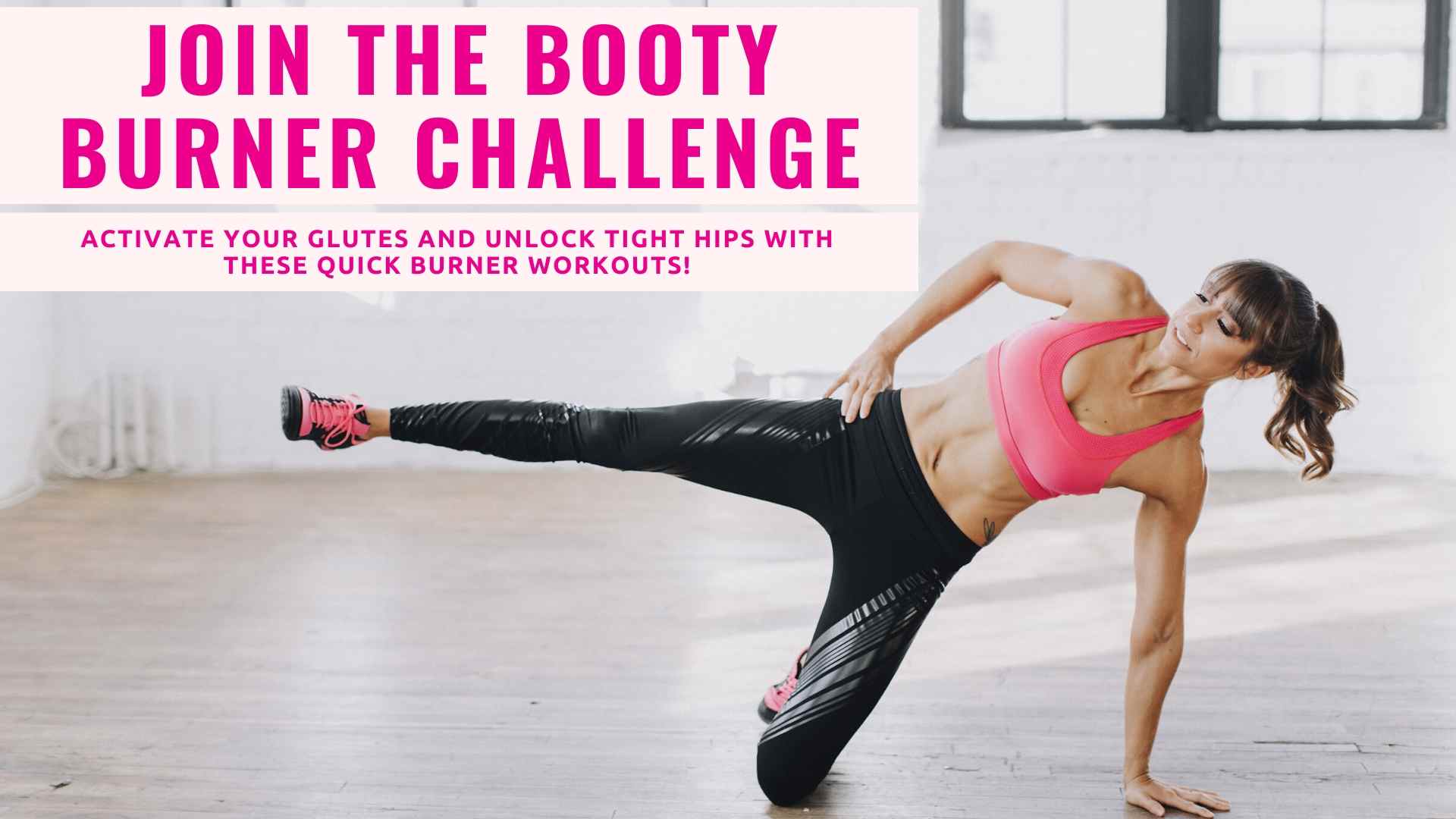
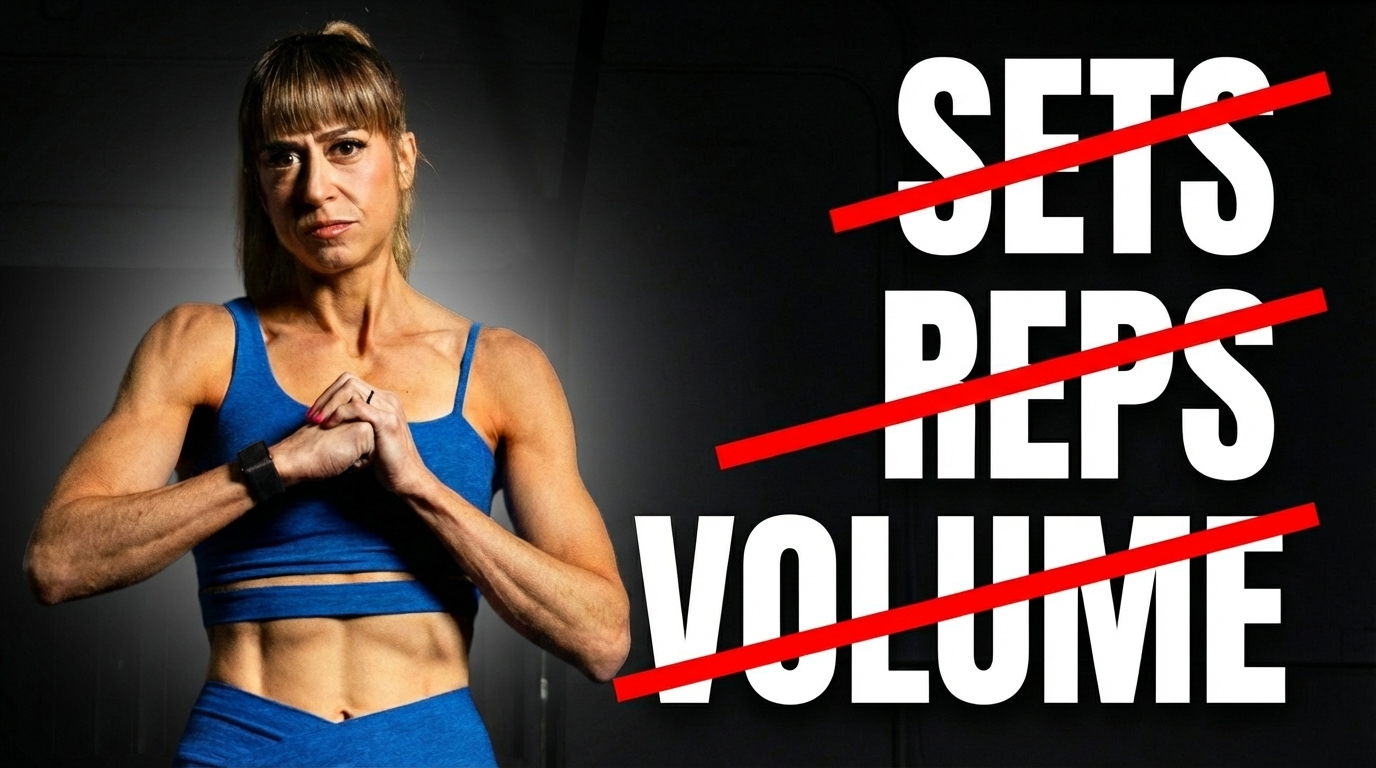

Cori,
This is fabulous information. I’m so glad you shared what proper form of tbe bridge loooks & feels like. With this info, I will definitely be able to improve on my form. Thank you for sharing!
Glad it helps Teresa!
This is beyond helpful. I’ve been panicking because my traps have been getting bigger and I was sooo confused as to why! Thanks so much!!
Glad it helps! Although trap development probably also relates to their recruitment during upper body moves…
Oh damn! I’ve quite realized I probably did this exercise the wrong way for years!! So, let’s reset and start doing it well. Thank you for your info!
Always learning and improving! Glad it helps!
I’m still feeling it in the back of my thighs more than anywhere else.
There was one day when I did it about 200 times (probably not the best idea) and the next few days the back of my thighs were extremely tight but I felt absolutely nothing in my glutes.
Is there something I’m doing wrong or is there somewhere to help minimise the strain on the back of my thighs and focus it on my glutes?
Sounds like you need to reduce the volume and work on your hip mobility. Getting your glute medius to fire better will also help.
I have less than 100 degree flexion due to developing arthrifibrosis after knee replacement. When I do bridges my feet can’t line up and I feel the pose in the back of my thighs…not my gluteus.
Adjusting foot positioning is key and you may need a band to help you get started as well as some foam rolling of your quads and hamstrings prior. Even calf rolling may be key.
I have a physio who taught me to do this whilst squeezing a pillow between my legs first. This will ensure you are using your glutes and not your back. It’s about quality of exercise not quantity!
So that actually engages the adductors more which if they are inhibit could help you engage your glutes but doesn’t directly effect glute activation. A band around your legs as you press out would directly engage your glutes medius more. So indirectly can totally be key if you have weakness there 🙂
Really good information! I am testimony with not having the right muscles fire. I was doing a superman move and I believe that my lumbar spine took the bulk of the work rather than my glutes. Next day I had a major back spasm, likely due to exhausting my lower back muscles while trying to perform a single leg squat.
So glad it helps!
Post injury, I got low back pain while bridging & was told to use the deep core muscles as I was using my back muscles instead. I found it hard to activate core muscles & glutes while keeping lower back muscles relaxed.
Were you using the posterior pelvic tilt? Doing any foam rolling before trying to bridge?
Should you maintain posterior pelvic tilt throughout the entire set or relax when your bottom returns to the ground?
You can actually do either as long as you re-engage before lifting. For most clients starting out, I have them just maintain the ppt until all reps are complete.
Hi Cori,
I get major hamstring cramp if I try to lift my back leg up while doing a hip flexor stretch. Why is this? Thank you x
Your hamstrings are overactive. Try foam rolling them before and really focus on squeezing your butt to drive your hip into extension. You can also start by pulling your heel in with a towel so you don’t tense your hamstring.
Can’t wait to try this! Hips and back very tight following surgery to both.
This literally just changed my life THANK YOU!! The feet just past fingertips, elbows down, and driving through heels were NOT what I was doing and I could feel my hamstrings and hip flexors taking over on my right side. But I just did a set after foam rolling and kept these instructions in mind, and some deep glute muscle I have NEVER been able to activate with bridges started working. My hip on that side didnt even pop, and it ALWAYS does. This is incredible. THANK YOU!!!
Aw yay! So glad the tips helped Colleen! Keep being intentional with your training!
Definitely key you get in that mobility and stability work right away post surgery and keep it in as prehab! Hope your recovery is going well!
I have always felt these in my quads and now I know why. Will try again following this. I need to work on glutes, core and lower back as i’ve been exercising a lot recently and my knees really hurt so need to support them more!
Thanks for the info.
Glad the tips help!
Great exercises and tips, very helpful!
Glad the post helps Margaret!
Hi Cori, thanks for the article. According to Dr Stuart McGill, the spine and pelvic tilt should always stay in neutral during load bearing to maximise their safety and health. PPT results in flexion of the lumbar spine, and this would be harmful if repeated many times, especially under load (such as during barbell bridges or hip thrusts). What do you think about this?
Actually researchers like Bret Contreras, who created the hip thruster, promote the posterior pelvic tilt for moves like bridging when weighted because of the engagement of the glute max. We forget the glute max controls that pelvic positioning. So while I agree with Stuart McGill for squats and deadlifts and many moves, there is not only one way to do things. And there are times that posterior pelvic tilt may actually help you AVOID going into anterior pelvic tilt and better brace your entire core. Like with core floor work it can better engage your intrinsic core stabilizers to brace your core and not lead to overload of your hip flexors. The ability to utilize different positions and brace is key!
Hi Cori, thank you for this article. So you advise to squeeze the glutes after doing the pelvic tilt and lifting, right? My problem is whenever I am squeezing my glutes, I am also involuntarily squeezing the middle of my lower back, which the causes a lot of pain. How can I manage to relax my middle lower back while squeezing the glutes?
As you lift you should be contracting your glutes to drive the hip extension. Make sure you’re also following the tips on driving your elbows down or arching through your mid-back.
Is it safe to do variations of glute bridges?
I’ve seen videos of people doing full videos where they change the position of their legs and feet.
Wide legs, on their toes, etc. Is it safe?
Depending on the variation and your needs and goals, variations can be great. We just want to make sure every move we include has a purpose that matches what we are trying to achieve based on our current fitness level and injury history.
Informative and very well presented. Am I right in saying that we shouldn’t arch our
lower backs ? You also say that the back shouldn’t be raised higher. I presume it arches
the back. But the final set of videos contain a B & W one showing the lady seem to do
that. Please correct me if am wrong.
I demo some incorrect movements and go through verbal cueing to describe what to do instead.
Looking forward to more tips. Very helpful
Glad they helped!
Great article! Extremely helpful, I can’t wait to implement.
My back and hamstrings are grateful 🙏
So glad it helps Jamie!
Hi Cori,
Doing all the tips you mention here, I still feel my quads taking over. Do you think it would be okey if I do the exercise with feet further out? if so how much? As working my hamstrings would be better for me than overworking quads, as I already do a lot of quad work for my knee problems. Or any other tips to disengage quads?
Thank you
Are you doing hip mobility work and quad foam rolling before? You need that full prehab process – activation like bridges is the 3rd step after foam rolling and stretching.
Thanks for the answer Cori, I was doing all 3 phases just realized a mistake, I was doing static streches instead of dynamic ones. I will try again with dynamic streches. Another question, at which one shall we inhale/exhale during the bridge?
You always want to exhale with exertion to not create too much intra-abdominal pressure while bracing.
Thank you this helps me
Glad it helps!
Thank you for this article, I’m recovering for a back injury and I think the ideas you put forward here will really help. I have very weak body/sensory awareness in general, I didn’t even realize that exercises won’t automatically engage the right muscles without direction from the mind. I focused on clenching my glutes before even coming off the ground and I immediately felt a huge difference. Thank you!!
YES! So often we do just focus on the movement over what we feel working. But due to previous injuries and postural distortions from our daily postures, doing the right moves and even having seemingly the “right form” doesn’t mean we are using the correct muscles to power the movement! We may compensate even in an attempt to mimic proper form!